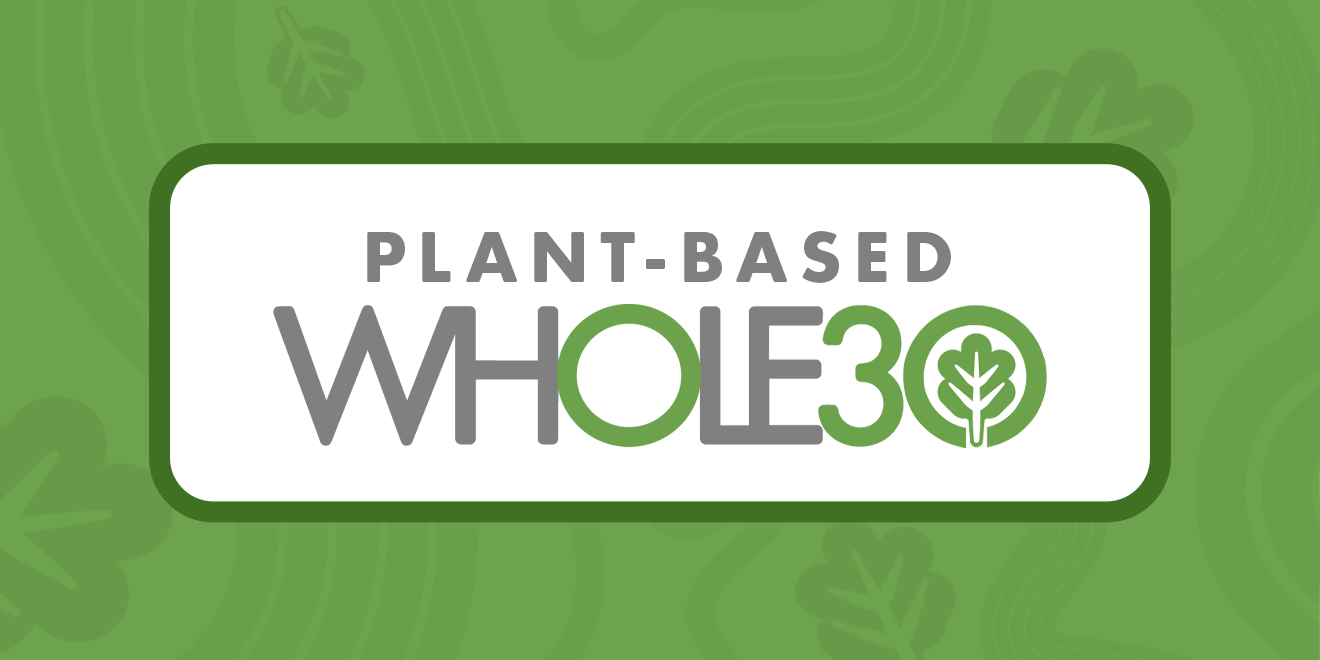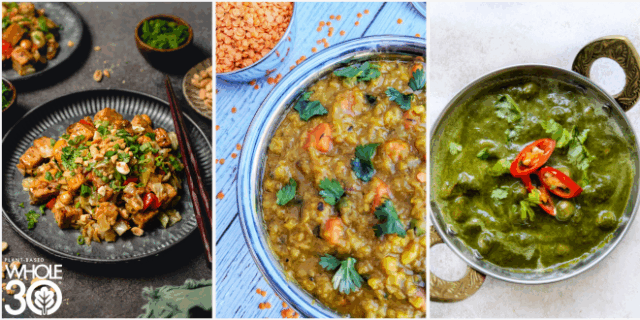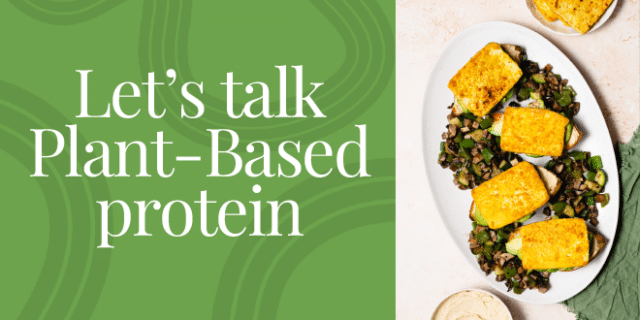Getting enough protein while eating plant-based is a common concern. But there are so many delicious, high-protein plant-based foods available that can help you hit your goals without compromising choice or flavor. All the options help you make the most of your Plant-Based Whole30 (or Food Freedom) by varying the plant-based protein foods you eat.
Choosing a variety of proteins throughout the day can be beneficial in many ways. You don’t have to rely too heavily on one source, creating food fatigue. And variety also means you get a diverse range of vitamins, minerals, and other nutrients.
Follow along to learn more about the benefits of eating different plant-based protein foods. You’ll also find ideas for mixing up your plant-based proteins—including beans, lentils, tofu, and tempeh.
Why a Variety of Proteins is Important
A variety of plant-based proteins helps you make sure you’re getting enough essential amino acids, which are the building blocks for protein. In the 1970s, there was a book published that popularized the idea of combining incomplete proteins at meal times. This was found to be of little concern with recent research.
Now, combining plant proteins at meal times to make them complete is not a worry for plant-based eaters. Luckily, amino acids are stored in the liver and our bodies use them as we need them. So eating incomplete and complete plant-based proteins throughout the day (instead of inside one meal) will still help you reach your protein goals in a healthful way.
The Academy of Nutrition and Dietetics’ position paper on vegetarian eating states:
“Plant protein can meet requirements when a variety of plant foods is consumed and energy needs are met. Research indicates that an assortment of plant foods eaten over the course of a day can provide all essential amino acids and ensure adequate nitrogen retention and use in healthy adults, thus complementary proteins do not need to be consumed at the same meal.”
You can still combine plant-based protein foods together, there’s no harm in doing so. Just don’t feel like you have to put them together in a meal to get the maximum benefits. Instead, you have the freedom to pick combinations of high-protein plant foods throughout the day.
Nutrient Adequacy Comes from Diverse Plant-Based Protein Foods
Each ingredient you put into a meal has a unique set of nutrients. A diverse diet helps ensure that you get all the nutrients your body needs to function properly. Eating the same foods over and over can limit your total nutrient intake if your day isn’t properly balanced. Which is true for those eating plant-based or not. So eating a variety of foods is the best choice for helping ensure you acquire everything you need.
An example of a lack of variety in your plant-based protein foods would be eating a tofu frittata for breakfast, tofu taco bowls for lunch, and quick tofu and mushroom zoodle soup for dinner. Though tofu is a great source of protein, this day lacks variety in protein sources.
Fun Fact: You may be wondering how much tofu is too much? It’s recommended to have between 3 to 5 servings of soy per day (255 grams to 425 grams of tofu). For reference, 1 block of extra firm tofu is about 4 servings.
To add variety to the plant-protein sources in the example above, the tofu frittata for breakfast is fine when the lunch and dinner options are swapped for different proteins. For lunch, add in the Plant-Based Whole30 roasted veggie-black bean bowl with tahini, and for dinner have white-bean mushroom meatballs with pesto-butternut squash noodles. In this revised example, you have tofu, black beans, and white beans as your main plant-based protein foods. That’s three distinct, diverse sources of plant protein to achieve the variety you want.
Varied Diets Reduced Risk of Chronic Diseases
Eating a diverse diet has been linked to a reduced risk of chronic diseases. This is because a variety of foods brings different phytochemicals—a class of micronutrients from plants—and antioxidants, which can help protect your body from damage. And that’s on top of the diversity of vitamins, minerals, micronutrients, and macronutrients that variety brings to your diet and your efforts to maintain your health.
Remember, variety not only applies to your protein choices, but to all the foods you eat!
Opting for Diverse Plant-Protein Sources Makes for a More Enjoyable Eating Experience
Meal times and eating should be fun. Opting for the same plant-based protein foods every day can get boring and lead to food burnout. By simply adding a variety of proteins into your diet, you can also make meals more interesting and enjoyable.
Feel free to add variety by trying new foods during your Plant-Based Whole30 too. There are plenty of amazing plant-based protein food options that can easily be added to your grocery list. For more information on options, check out our blog post on go-to high-protein plant-based foods.
Choosing new foods—including some uncommon vegetables and fruits—is the best way to keep mealtime exciting. You’ll be preventing boredom, keeping yourself excited about eating, and increasing the likelihood you’re making healthier choices. That’s because opting for multiple sources of plant-based protein foods from day to day gives you a greater variety of nutrients.
So if you learn one thing, let it be this: a varied, diverse diet is essential for good health and well-being. It ensures that you acquire all the nutrients your body needs, reduces the risk of chronic diseases, and promotes a healthy gut microbiome. If that isn’t enough reasons to vary your diet, it will also make meals more enjoyable, too.
















